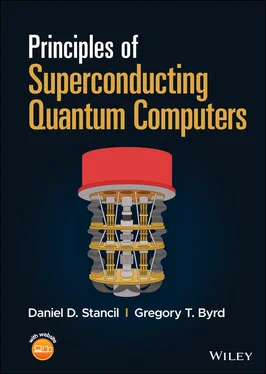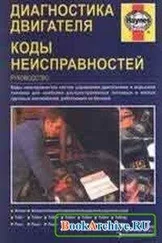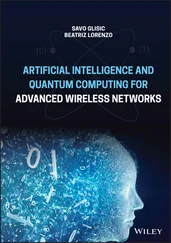63 31
64 32
65 33
66 34
67 35
68 36
69 37
70 38
71 39
72 40
73 41
74 42
75 43
76 44
77 45
78 46
79 47
80 48
81 49
82 50
83 51
84 52
85 53
86 54
87 55
88 56
89 57
90 58
91 59
92 60
93 61
94 62
95 63
96 64
97 65
98 66
99 67
100 68
101 69
102 70
103 71
104 72
105 73
106 74
107 75
108 76
109 77
110 78
111 79
112 80
113 81
114 82
115 83
116 84
117 85
118 86
119 87
120 88
121 89
122 90
123 91
124 92
125 93
126 94
127 95
128 96
129 97
130 98
131 99
132 100
133 101
134 102
135 103
136 104
137 105
138 106
139 107
140 108
141 109
142 110
143 111
144 112
145 113
146 114
147 115
148 116
149 117
150 118
151 119
152 120
153 121
154 122
155 123
156 124
157 125
158 126
159 127
160 128
161 129
162 130
163 131
164 132
165 133
166 134
167 135
168 136
169 137
170 138
171 139
172 140
173 141
174 142
175 143
176 144
177 145
178 146
179 147
180 148
181 149
182 150
183 151
184 152
185 153
186 154
187 155
188 156
189 157
190 158
191 159
192 160
193 161
194 162
195 163
196 164
197 165
198 166
199 167
200 168
201 169
202 170
203 171
204 172
205 173
206 174
207 175
208 176
209 177
210 178
211 179
212 180
213 181
214 182
215 183
216 184
217 185
218 186
219 187
220 188
221 189
222 190
223 191
224 192
225 193
226 194
227 195
228 196
229 197
230 198
231 199
232 200
233 201
234 202
235 203
236 204
237 205
238 206
239 207
240 208
241 209
242 210
243 211
244 212
245 213
246 214
247 215
248 216
249 217
250 218
251 219
252 220
253 221
254 222
255 223
256 224
257 225
258 226
259 227
260 228
261 229
262 230
263 231
264 232
265 233
266 234
267 235
268 236
269 237
270 238
271 239
272 240
273 241
274 242
275 243
276 244
277 245
278 246
279 247
280 248
281 249
282 250
283 251
284 252
285 253
286 254
287 255
288 256
289 257
290 258
291 259
292 260
293 261
294 262
295 263
296 264
297 265
298 266
299 267
300 268
301 269
302 270
303 271
304 272
305 273
306 274
307 275
308 276
309 277
310 278
311 279
312 280
313 281
314 282
315 283
316 284
317 285
318 286
319 287
320 288
321 289
322 290
323 291
324 292
325 293
326 294
327 295
328 296
329 297
330 298
331 299
332 300
333 301
334 302
335 303
336 304
337 305
338 306
339 307
340 308
341 309
342 310
343 311
344 312
345 313
346 314
347 315
348 316
349 317
350 318
351 319
352 320
353 321
354 322
355 323
356 324
357 325
358 326
359 327
360 328
361 329
362 330
363 331
364 332
365 333
366 334
367 335
368 336
369 337
370 338
371 339
372 340
373 341
Over the past several years progress in quantum computing technology and algorithms has accelerated rapidly. We believe that Electrical and Computer Engineers have much to contribute to this work, and one of the goals of this book is to help introduce those with ECE backgrounds to this exciting area.
Our interest in quantum computing was initiated by the discussions between NC State and IBM about establishing the IBM Quantum Hub at NC State, and began in earnest in the spring of 2018. During this semester we both sat in on a Computer Science special topics seminar led by professors Frank Mueller and Patrick Dreher. This led to a joint CSC/ ECE special topics course on quantum computing in the fall of 2018 that was team-taught by professors Mueller and Dreher along with one of us (GTB).
As we have delved more deeply into quantum computing over the past several years, we have discovered that most of the rapidly-growing literature is addressed to those with backgrounds in physics, mathematics, and/or computer science, and often assumes a body of shared prerequisite knowledge and terminology that is not typical for Electrical and Computer Engineers. Electrical Engineers studying semiconductor physics do study quantum mechanics, but from a very different perspective. Band theory, effective mass, tunneling, and perhaps the hydrogen atom are covered, but quantum computing involves 2-level systems, state vectors and rotations, Hamiltonians, and unitary operators—topics not normally emphasized in device physics courses. Further, there is very little available in the current introductory literature explaining how the systems operate .
Just as semiconductor physics became a standard component of electrical engineering curricula beginning in the early 1960s, we believe that quantum computing will become integral parts of ECE curricula in the coming decades. The span of ECE covers the entire range of technologies underpinning quantum computing, including device physics and modeling, nanofabrication, RF and optical systems, signal processing, information theory, error correction and coding, transpilers and compilers, system architecture, and algorithms and applications.
At the time of this writing, there are competing technologies for the implementation of quantum computing, including trapped ions, quantum dots, topological structures, and artificial atoms made with superconducting devices. While we believe Electrical and Computer Engineers will be critical to the development of all of these systems, we have chosen in this volume to concentrate on superconducting technologies relying on Josephson junction transmons.
The intended audience is advanced undergraduate students and first-year graduate students in Electrical and Computer engineering. In presenting topics, we have tried to bridge the gaps that we have encountered between the prevailing literature and the backgrounds of Electrical and Computer engineers.
We offer this work not as an exposition by authorities, but rather as an introduction by technological “pilgrims” hoping to help other “pilgrims” along this exciting journey.
D. D. Stancil
G. T. Byrd
Raleigh, NC
We are grateful to our colleagues and students at NC State for many helpful conversations that have deepened and clarified our understanding. In addition, we would like to acknowledge helpful comments on portions of the manuscript by J. C. Bardin and N. Earnest-Noble. Of course, any remaining errors are ours.
We would also like to express appreciation to Brett Kurzman, Sarah Lemore, Becky Cowan, and the capable team at Wiley for their assistance and guidance.
Читать дальше





![Алексей Лавров - Quantum Ego [СИ]](/books/414972/aleksej-lavrov-quantum-ego-si-thumb.webp)



